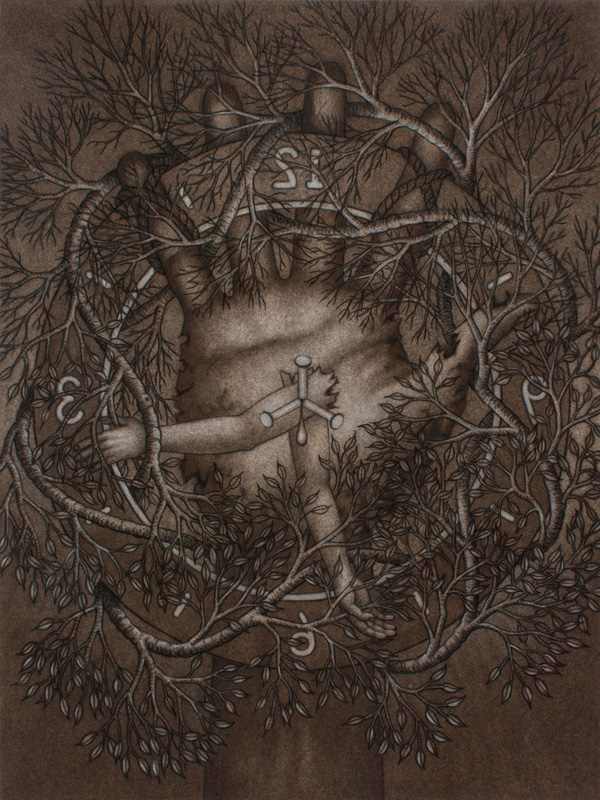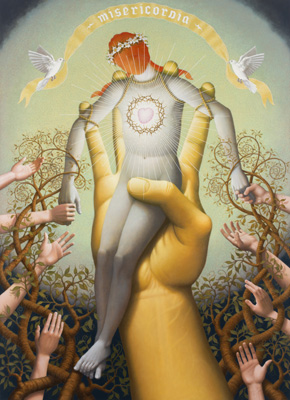
 |
| Passing Time 2017, pastel, graphite and colored pencil on paper 12 x 9 in. (sheet: 16 x 13 1/8 in.) |
Passing Time |
My initial motivation for creating Passing Time was to revisit the size relationship motif I first used in my 2001 painting, Misericordia. In it I depicted the size relationship by juxtaposing a large, oversized hand with other proportionally smaller elements like the dead figure held by the hand. In Passing Time, instead of using a figure, I decided on a giant clock to create the same effect. This moved the drawing in a new direction and established a much different theme than in Misericordia. Common to both pictures, but symbolically different, is the use of smaller hands to help create the size relationship. In Misericordia they can be seen reaching out to the departed as if offering solace and compassion. In Passing Time on the other hand (pun intended) the smaller hands are the hands of the clock (also pun intended), representing the passage of time. |
 2001, acrylic on canvas 66 x 48 in. |
 2017, pastel, graphite and colored pencil on paper 12 x 9 in. (sheet:16 x 13 1/8 in.) |
Although vines are also common to both pieces they too represent symbolically different things. In Misericordia the vines represent how we are all bound to nature and our earthly existence. In Passing Time however they represent the force of nature and how nature functions beyond the artificial boundaries of manmade time. Both pictures also have a common amorphous and ungrounded space. At the same time their overall tenor and tone is much different. Misericordia is light and airy and concerned with themes of compassion, love and hope, whereas Passing Time is dark and foreboding, focusing on the theme of nature dominating manmade time. In Passing Time the giant hand is bound to the clock by ropes and is running backwards, or counterclockwise, as if confused. The hands of the clock read 3:33, inferring something supernaturally good or evil, and are pinned in place by tri-nail that oozes a single droplet of blood that hangs motionless as if suspended in time. The giant hand and clock are both entangled within two endless strands of vines that branch out into leaves at the bottom but become stark, barren, and leafless at the top of the 12 o'clock hour. In the end I think the use of the size relationship motif and the ungrounded space helped create an otherworldly reality that benefited both pieces. - Brian Mains, August 2020 |